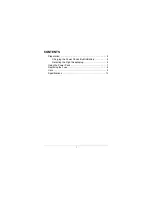
51
User Manual 10H52258UM60 - Rev. 3 - 01/2019
Introducing UPS Operations
APM 400/600
Figure 6-3 Normal mode block diagram
Battery mode
The operating mode where the battery provides backup power supply to the loads via the inverter is known as
battery mode. In the event of a mains failure, the system will automatically switch to the battery mode, with no
interruption in the power supply to the load. When the mains supply is restored, the system will revert
automatically to normal mode, without the need for any manual intervention, and again, there will be no
interruption in the power supply to the load.
The block diagram in Figure 6-4 illustrates Battery Mode:
Figure 6-4 Battery Mode block diagram
Automatic restart mode
The UPS includes an automatic restart function; this means that, when the inverter shuts down due to a mains
supply failure, and the battery discharges until it reaches the EOD voltage, if and when the mains supply
recovers, the UPS will restart, following a predetermined delay period. This function, and the automatic restart
mode, must be set-up by an authorized Vertiv engineer.
During the automatic restart process following the predetermined delay, the UPS will recharge the battery to
guard against the risk of interruptions in the power supply to the load in the event of another mains failure.
If the automatic restart function has not been enabled, the user may restart the UPS manually by pressing the
FAULT CLEAR key followed by the INVERTER ON key.
Bypass mode
In the event of an inverter failure, inverter overload or manual inverter shutdown when the UPS is in a normal
mode, the static switch will transfer the load from the inverter to the bypass without any interruption in the
output power supply; whereas, if the inverter and bypass are not synchronized, there will be a transitory
interruption in the power supply to the load not exceeding 20 milliseconds.
The block diagram in Figure 6-5 illustrates bypass mode:
Figure 6-5 Bypass mode block diagram
















































